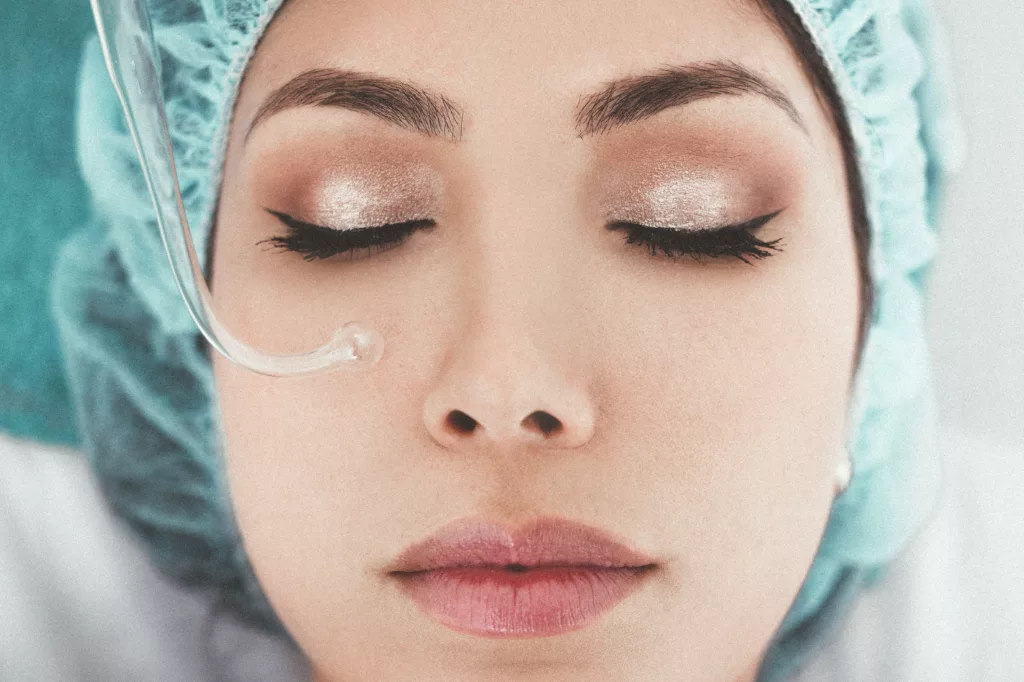
Discover the contrasting features and difference between BBL and IPL. Uncover which treatment is best suited for your specific needs and desired results. In the United States, an estimated 5 million people grapple with a skin condition known as hyperpigmentation. Whether it takes the form of sunspots or acne scars, these dark spots on the face can severely impact self-confidence and quality of life.
Thankfully, advancements in technology make it easier to treat and eliminate hyperpigmentation.
Among the many treatments available today, Broadband Light (BBL) therapy and Intense Pulsed Light (IPL), have emerged as two of the most popular and effective solutions to dark spots.
But what’s the difference between the two? And most importantly, which one is right for you? In this guide, we delve deep into both photofacial treatments, demystifying them and helping you make an informed decision for your skin treatment journey.
Understanding BBL and IPL
Both Broadband Light (BBL) therapy and Intense Pulsed Light (IPL) are non-invasive or non-surgical skin treatments that offer a solution to hyperpigmentation. They work on a similar principle, utilizing light energy to target and reduce the appearance of dark spots on the skin. These treatments are recognized for their capability to deliver noticeable improvement in skin texture and tone.
However, BBL and IPL differ in the type of light that is used. They also differ in the areas of the skin they target, the types of results they produce, and their recommended frequency.
BBL: Broadband Light Therapy
BBL is a type of photofacial therapy that uses broadband or broad-spectrum light to target deeper layers of the skin.
Developed by Sciton, the procedure works by using light energy to gently heat up, or “photothermolyse” the dark spots. The heat breaks down melanin clusters, which aids in gradually fading the hyperpigmentation. This also stimulates the production of collagen and elastin within deeper layers of skin, which helps to improve skin texture and reduce fine lines and wrinkles — giving patients a clearer complexion.
BBL treatments are known for their precision, allowing practitioners to customize the wavelength and energy levels to address specific issues like pigmentation irregularities, sun damage, freckles, and signs of aging. It can also be used to treat broken capillaries and for permanent hair removal.
IPL: Intense Pulsed Light Therapy
IPL is another type of photofacial treatment that uses intense pulsed light to target dark spots near the surface of the skin. It was one of the first photo-rejuvenation technologies and is still widely used today.
Unlike BBL, which targets deeper layers, IPL uses short bursts of high-intensity light to help reduce visible discoloration and improve skin texture. It uses light waves to target the skin’s hemoglobin and melanin levels and address various skin issues.
IPL uses a range of wavelengths, typically between 500 and 1,200 nanometers, to target skin imperfections. It is renowned for its effectiveness in treating conditions such as sunspots, rosacea, broken blood vessels, and fine lines.
Difference between BBL and IPL
The main difference between BBL and IPL lies in their targets. While both treatments use light waves, BBL focuses on stimulating collagen production, while IPL targets the skin’s hemoglobin and melanin levels. This means that BBL revitalizes skin cells, while IPL does not.
This difference in targeting can make one treatment more suitable for certain individuals or specific skin concerns.
For example, IPL may be more effective for those who are looking to reduce the appearance of sunspots, rosacea, redness, or large pores. On the other hand, BBL is better suited for those with signs of aging like age spots and wrinkles, as well as uneven skin texture, acne, freckles, and birthmarks.
Recovering From BBL and IPL Photofacials
Both BBL and IPL require a series of sessions. The total number varies depending on the specific concerns and the overall skin condition. In general, the multiple sessions are spaced at least a few weeks apart for optimal results.
The two treatments share similarities when it comes to recovery do’s and don’ts.
Since both BBL and IPL can increase the sensitivity of the skin to sunlight, it is crucial to wear SPF 30+ or stronger sunscreen daily. Moreover, abrasive skincare products like retinol and glycolic acid should be avoided in the meantime.
However, there are also a few differences between the downtime and recovery of BBL and IPL.
BBL Downtime and Recovery
BBL photofacials require minimal downtime, with temporary redness and some mild swelling being the only visible side effects. You can expect pinking skin or a mild sunburned appearance for two to four hours after a BBL treatment.
In rare instances, there may be bruising or swelling, particularly around the eyes and other sensitive areas. This is no cause for concern and generally subsides in five days or less.
One distinct advantage of a BBL photofacial is you can apply makeup and other skin products almost as soon as the procedure is complete.
IPL Downtime and Recovery
On the other hand, IPL photofacial treatments usually require a bit more recovery time and can cause some general redness, swelling, and bruising.
The redness and blotchiness can persist for up to two days after the treatment. In some cases, the brown spots can get darker before peeling off and healing.
Moreover, the face can feel as if it’s been sunburned for up to six hours after the photofacial. Applying a cool washcloth or ice pack can help cool down the feeling.
Patients are also advised to avoid makeup for up to 48 hours after the treatment, though sunscreen and moisturizers are allowed.
Who Are Ideal Candidates for BBL and IPL?
BBL and IPL photofacials are suitable for anyone looking to reduce hyperpigmentation and improve their skin’s overall tone and texture.
In general, BBL is seen to be more effective for individuals with darker complexions.
However, the following people are advised against getting either BBL or IPL treatments:
- Pregnant women
- Breastfeeding women
- Anyone with sunburn
- Recently used a tanning bed
- Sensitive to light
IPL is also not recommended for individuals using retinoids or who have very pigmented or dark skin.
The Bottom Line
BBL and IPL photofacials both offer significant benefits to those seeking to reduce hyperpigmentation and improve their skin texture. Each treatment has its unique considerations, with BBL often preferred for individuals with darker complexions.
Ultimately, consulting a dermatologist or skin expert is the best way to determine the best treatment for your skin type and condition. Remember, your safety and satisfaction are the top priority when choosing a skin treatment.

